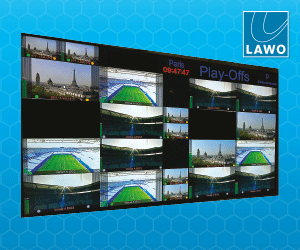Ericsson, Qualcomm Technologies and Thales Alenia Space have partnered on 5G NR non terrestrial networks (NTN) technology since 2022.

The integration of traditional mobile networks with satellite-based connectivity has taken a step forward, bringing the possibility of seamless global mobile coverage across land and sea closer to reality. Ericsson, Qualcomm Technologies and Thales Alenia Space have demonstrated a 5G standards-based non-terrestrial network (NTN) call using a simulated low Earth orbit (LEO) satellite channel in a French test laboratory.
This proves that an NR-NTN capable device can maintain uninterrupted mobile connectivity in areas covered by either terrestrial or satellite networks. It means that even in remote locations such as oceans or dense forestswhere terrestrial networks cannot reachdevices will still be able to connect without requiring additional satellite equipment like dishes. This achievement paves the way for new applications, including high-definition voice calls and real-time video streaming via satellite connectivity.
The trial marks a major milestone toward commercialising non-terrestrial networks. The collaboration, which began in 2022, was the worlds first publicly announced 5G NTN project based on 3GPP standards. The partners focused on testing key technical aspects, including managing delays, Doppler effects, and ensuring seamless satellite handoverscritical for maintaining uninterrupted communication in satellite environments.
Fredrik Jejdling, Executive Vice President and Head of Business Area Networks, at Ericsson, said: “This successful 5G non-terrestrial network call represents not just a technological breakthrough but also showcases the practical viability of integrating satellite technology within existing terrestrial frameworks. Ericsson is committed to advancing ubiquitous connectivity, and our collaborative effort with Thales Alenia Space and Qualcomm Technologies will help ensure that future communication systems are more inclusive, resilient, and globally accessible. By leveraging NTN technology, we aim to bridge the digital divide and bring reliable communication to every corner of the world.”
John Smee, Senior Vice President, Engineering, Qualcomm Technologies, Inc., added: “Our collaboration with Ericsson and Thales Alenia Space is crucial in leveraging 3GPP standards for satellite communications, helping to ensure that 5G connectivity is universally accessible to 5G smartphone users. Qualcomm Technologies remains committed to enhancing chipset capabilities that support the seamless integration of 5G non-terrestrial networks and terrestrial networks.”
Hervé Derrey, CEO of Thales Alenia Space, stated: “For years, Thales Alenia Space has been at the heart of all initiatives aimed at seamlessly integrating satellite communications in the 5G network infrastructure – including standardization with 3GPP – and takes 5G NTN standardized solutions into account in the design of its satellite payloads supporting either Broadband or Direct-To-Device (D2D) services. By combining Thales Alenia Space’s expertise in space technologies with Ericsson’s leadership in 5G networks and Qualcomm Technologies advanced chipsets, we are making significant headway towards the seamless integration of terrestrial and NTN networks, to provide access to 5G services, anywhere and at any time.”
Looking ahead, Ericsson, Qualcomm and Thales Alenia Space remain committed to further refining 5G/6G NTN technologies. Their goal is to scale 5G NTN deployment, enabling a full range of servicesincluding messaging, voice and dataacross multi-orbit satellite networks. This innovation will help bridge the digital divide, ensuring reliable mobile connectivity for users everywhere, regardless of location.











































































